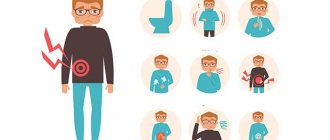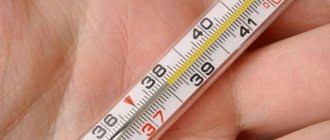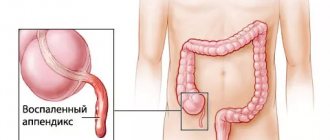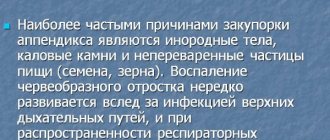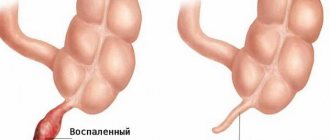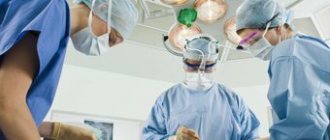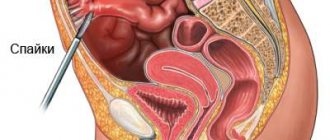Appendicitis is an inflammation of the vermiform appendix of the cecum (Appendix), a common pathology of the abdominal cavity, in the treatment of which it is unlikely to avoid surgical intervention. The operation to remove the appendix is not considered difficult among medical practitioners, since it has already been performed on many millions of patients. According to international medical statistics, about ⅕ of the planet's population lives safely after removal of Appendix. Naturally, the suture remains after appendicitis and requires some care. Not only the period of return to a full active life, but also the external (aesthetic) appearance of the abdominal cavity (which is especially concerning for the fair half of humanity) depends on the correct implementation of the recommendations of specialists.
Functions of the appendix
According to numerous physiologists, Appendix does not carry any useful functional load. We inherited it from our prehistoric ancestors and in the process of evolution turned into a so-called rudiment. However, some scientists suggest that it (thanks to its lymphatic system) helps the formation of general immunity during the growth period of the body in childhood.
In any case, the suture after appendicitis remains the only reminder that Appendix was originally in our body. Removing this atavism will not entail any additional functional limitations.
How long does the stitch hurt?
How long the stitch hurts after surgery depends on the type of appendectomy. If a classic abdominal operation was performed, then the symptoms will bother you for about 4 weeks.
There are cases where the suture from appendicitis hurts after many years. Some people who have had an appendectomy experience periodic pain in the scar area throughout their lives. This happens after exercise, sports and when the weather changes. In women, the post-operative scar hurts during pregnancy.
Sometimes the sutures hurt after surgery due to other diseases, for example, varicose veins in the abdominal cavity.
Large scars after appendicitis periodically remind a person of themselves throughout life. Correction methods are used to smooth out a cosmetic defect, but discomfort and pain from the scar will sometimes appear.
Take care of yourself and be healthy!
Location of the appendix in the human body
It depends on the individual physiological characteristics of the structure of the individual on which side a person has appendicitis. It can be located:
- in the bed of the right iliac region;
- behind the cecum (from where it grows);
- behind the peritoneum (quite atypical), and in this case its symptoms are very often confused with acute inflammation of the kidneys or ureters;
- on the left side, with the so-called mirror arrangement of internal organs.
Symptoms and factors for the onset of the disease
Pain syndrome with appendicitis usually manifests itself:
- in the right iliac region;
- first in the stomach area, gradually going down the abdomen and being localized either on the right side or in the center.
For information! Naturally, the manifestation of pain depends largely on how and on which side a person’s appendicitis is located.
Inflammation of the appendix may be accompanied by:
- increased body temperature;
- nausea or vomiting.
The main factors causing appendicitis are:
- blockage of blood vessels or the lumen of the appendix;
- infections that spread throughout the body through the bloodstream;
- adhesions in the pelvic area (primarily this applies to women);
- the so-called unclear or incomprehensible causes of the inflammatory focus.
Diagnostics
First of all, an experienced specialist makes a preliminary diagnosis based on the patient’s complaints, external examination and examination of the abdominal cavity using the fingers (pressure and sharp release in the right iliac region, pushes into the lower part of the large intestine, and so on). Based on the intensification of painful symptoms, the doctor draws conclusions about the presence of appendicitis and the urgency of surgical measures. If time permits, then a blood and urine test is required.
Of the diagnostic tools, the best and most effective method is laparoscopy. Inserting an endoscope (with a camera attached to the end) through a small puncture allows the doctor to obtain the most complete picture of the inflammation. Based on the data obtained, a decision is made on the method of performing the surgical operation.
Additional diagnostic procedures (such as ultrasound, computed tomography or magnetic resonance imaging) may be prescribed to identify concomitant diseases or complications, but do not provide a 100% correct result for making a clear diagnosis of appendicitis.
Treatment
To date, the only effective treatment for appendicitis is surgery. If the pathology is detected at an early stage, then two main methods are used to remove the appendix:
- Classical. First, a small oblique incision is made and the inflamed appendage is removed. Internal appendicitis sutures are then placed, which dissolve during the healing process. The incision is then sutured from the outside.
- Laparoscopic. With this method, several thin punctures are made in the peritoneum, through which surgical instruments are inserted. This method is considered the most progressive and least traumatic. The cosmetic suture after surgery consists of barely noticeable dots on the skin.
The patient usually spends no more than 2 weeks in the hospital. If appendicitis is complicated by peritonitis (local or diffuse purulent), then the duration of treatment increases significantly. In particularly severe cases, this may even take several months.
What complications can occur after appendicitis?
With a favorable outcome, in the future people do not experience discomfort from a small scar on the body, which becomes barely noticeable over time, but there are cases when after the operation the seam hurts, and purulent formations indicate the presence of infection. In such cases, you need to immediately go to the clinic to avoid more severe consequences.
Pain in the suture area
In the first few days, pain is considered normal, but when it does not subside for a long time, it should cause concern. The reasons may be different, but the most dangerous is internal suppuration, which does not manifest itself in any way immediately after the operation. In open areas, purulent formations also appear, which most often appear after poor care of the wound at home. Infection can also be caused by irresponsible nurses in a hospital, but such situations are less common. Wounds that do not heal for a long time may indicate the presence of a chronic disease or reduced immunity. Then the patient is prescribed a course of additional therapy.
The suture after the operation will heal quickly if the surgical procedure itself was carried out on time, therefore, at the slightest suspicion of appendicitis, you should urgently call emergency help.
When are the stitches removed?
Removal of sutures after appendicitis is usually carried out 7-10 days after the operation. This procedure is practically painless and is performed quickly enough without the use of anesthesia. The healing time largely depends on the general health of the patient and his physiological characteristics.
The question of how often and how to treat a postoperative suture in a hospital setting has long been resolved for medical workers. To prevent infection and speed up the healing process, they use special solutions based on alcohol, furatsilin, iodinol and other skin antiseptics. After discharge from the hospital, the patient should strictly follow all the recommendations of specialists, both regarding the care of external sutures after removal of appendicitis, and regarding diet and permissible physical activity.
Features of suture healing after appendicitis removal
Appendectomy, or removal of the inflamed appendix in case of appendicitis, is a routine surgical operation, accounting for 75% of all urgent surgical interventions. After this, a rehabilitation period begins, the purpose of which is to speed up the healing of the suture and prevent the risk of developing secondary postoperative complications.
Features of healing
Normally, the scar after an appendectomy is located on the right side, slightly above the pubis , its length is from 5 to 10 cm. The length and location of the scar depend on the progress of the operation and complications. The healing process takes about a month, but complete completion of restorative tissue regeneration occurs after 6-12 months.
Healing goes through several stages:
- epithelial tissue damage;
- fusion of deep subcutaneous membranes;
- healing of the surface epithelium;
- tissue regeneration at all levels.
At first, the suture after appendicitis is red, swollen, and when pressed, the tissue feels rough and dense, which is due to the process of formation of connective tissue. Over time, the scar fades and after a year it becomes white.
Important! The scar remains for life; the skin in the area of the scar is not pigmented and does not tan in the sun. The visibility of the scar can be reduced thanks to the latest techniques in aesthetic surgery.
Rules for processing and caring for seams
One of the important stages of scar healing before it is completely tightened is antiseptic treatment . Regular dressings eliminate the risk of infectious complications, accelerate tissue regeneration and scar formation.
What to process
Popular antiseptic preparations for wound treatment:
- "Chlorhexidine" (aqueous or alcoholic);
- iodine, brilliant green;
- "Miramistin";
- "Furacilin".
You can make dressings with methyluracil liniment, Vishnevsky ointment, and the drug "Levomekol" . To accelerate tissue regeneration after healing of the surface suture, the scar is treated with sea buckthorn oil.
Interesting things on the site:
How long after appendectomy can you have sex?
Why does the temperature rise after appendicitis removal?
How many days of sick leave is given after appendicitis removal?
Ways to speed up healing
To improve aesthetic performance after appendectomy, it is important to follow all medical recommendations :
- use local preparations: Contractubex, Kelo-Kot ointments, Strataderm;
- avoid sunlight, do not visit the solarium;
- carry out regular dressings to avoid inflammation and suture dehiscence.
Modern methods of eliminating scar tissue of any location - cosmetic procedures, aesthetic surgery . When rough keloid scars form around the focus of epithelial deformation, a decorative tattoo can be made.
Lifestyle after discharge
After discharge, it is important to follow these recommendations::
- diet correction, frequent meals in small portions;
- control of bowel movements, prevention of constipation;
- avoid swimming in public pools and open water bodies;
- avoid lifting heavy objects.
It is recommended to take long walks in the fresh air , control body weight, and monitor the healing of the postoperative scar after discharge from the hospital.
When are the stitches removed?
On what day are stitches removed after appendicitis? This is usually done 7-10 days after surgery . The signal to remove the suture threads is the uniform color of the scar, the absence of compactions and nodules, and traces of separation.
What affects withdrawal times?
The timing of suture removal can vary greatly , this is influenced by a number of factors:
- autoimmune pathologies, skin diseases - healing lasts about a month;
- suppuration of the wound - installation of drainage is required to release purulent exudate;
- non-compliance with rehabilitation rules: lack of antiseptics, hygiene, suture dehiscence;
- too large a suture after complications during the operation.
Note! Usually the scar after an appendectomy heals well, without complications. After 10 days, the sutures are removed and the patient is sent home for further recovery.
Possible complications and dangerous symptoms
Typical causes of complications after appendectomy surgery:
- secondary infections;
- divergence of internal or external seams;
- suppuration of the wound;
- individual reaction of the body to scar formation.
Complications can result from insufficient qualifications of the surgeon, as well as the patient’s lack of discipline in following the doctor’s recommendations. Among the complications are :
- sealing of the suture is a normal reaction of the body and skin in response to scarring, no special treatment is required;
- suppuration of the suture - is associated with infection in the wound, so a purulent infiltrate quickly forms, and healing is difficult;
- redness - hyperemia and swelling are caused by infection;
- discrepancy is the result of violation of rehabilitation rules and the development of infection.
Dangerous symptoms of complications that require immediate hospitalization and repeated surgery :
- change in the appearance of the scar;
- deterioration of condition;
- pain in the scar area, especially when radiating into the peritoneum and lower extremities;
- an increase in temperature that is not controlled by non-steroidal anti-inflammatory drugs;
- lability of blood pressure.
An ambulance should be called if vomiting, nausea, impaired consciousness, hardening of the abdomen, or acute pain occur. All this may indicate peritonitis, generalized sepsis and blood poisoning.
Source: https://gastrot.ru/kishechnik/zazhivlenie-shva-posle-udaleniya-appenditsita
What kind of suture may remain after surgery?
Which suture can remain on the patient’s body after appendicitis depends on the method of surgery, as well as the severity of the pathology. After laparoscopy, barely noticeable puncture points remain. If the pathology is detected in a timely manner and not burdened by complications, the length of the suture does not exceed 3-4 cm. In both cases, the use of modern healing drugs allows one to achieve a very good cosmetic effect and make the consequences of the operation almost invisible.
In severe cases of appendicitis, the suture after the operation can be quite large (up to 25 cm in length). This is due to the presence of complications (for example, the need to remove purulent accumulations and install special excretory catheters). To visually minimize such seams, you may need not only external medications, but also special physiotherapeutic procedures.
How a scar forms after an appendectomy
There are several options for the location of the appendix that extends from the cecum (appendix). The most common are lateral, medial, descending and ascending. The length of the incision during surgery ranges from 3 cm to 12 cm, therefore, these will be the dimensions of the scar. Many patients want to give the scar a more beautiful appearance, so they engage in prevention and treatment immediately after removal of the sutures.
The skin, connected by threads at the end of the operation, gradually grows together, the wound begins to scar. If there are no complications, the scar after appendicitis will be narrow and flat, because it will heal by primary intention. For many people who have undergone surgery, this option is ideal, but there are also those who want to minimize the consequences of the incision. This task will be especially difficult if the seam becomes inflamed. Then doctors will carry out additional manipulations and other procedures will be required.
Healing by secondary intention is an unfavorable option; it is doubtful that in this case the scar will remain barely noticeable.
The incision, after the stitches are removed, will be red-pink and painful, and after a few dozen weeks it will turn into a pinkish or white stripe. Throughout this period, it is necessary to monitor the condition of the scar after appendectomy, preventing its redness and swelling. Several factors influence the final formation and appearance of the scar:
- How did the operation go?
- skin regenerative abilities;
- resorption of auxiliary structures;
- use of scar correction methods.
Stages of healing of the external suture
Immediately after application, the seam has a pinkish or reddish tint. Moreover, the patient often really wants to scratch it, which should not be done under any circumstances. Then, as the damaged tissues regenerate, the process of sealing the suture after appendicitis surgery occurs. At the site of the formed scar, the sensitivity of the skin is significantly reduced.
Over time, the swelling of the suture (pronounced in the first days) and its redness decrease. This may increase the itching. Gradually, the outer scar lightens and acquires a yellow (or brown) color, slightly rising above the surface of the skin.
On a note! The speed of healing largely depends on subcutaneous fat accumulations. The more obese a person is, the longer it will take for the outer skin tissue to recover.
Naturally, the first time after appendicitis is removed, the suture hurts. And this is quite understandable due to the “mechanical damage” caused to the body. However, persistent pain over a significant period of time may indicate unwanted inflammatory processes. This must be reported to your doctor immediately.
Possible complications
If during the healing process, discharge (bloody, watery or purulent) begins to appear from the suture wound, then you must urgently contact a surgeon. This may be a symptom of incomplete resorption of the internal sutures or their divergence. Depending on the nature of the complication, the doctor prescribes special therapeutic procedures (sometimes with partial opening of the external suture and installation of a drainage catheter). In this case, a set of local antibacterial measures is carried out until the surgical wound is completely cleansed and healed.
Features of nutrition in the postoperative period
In the first few days after surgery, it is necessary to refrain from foods that can cause bloating, which can have a very negative effect on the healing of the suture after appendicitis. These include cabbage, vegetable salads, bread, fatty dairy products, and juices. It is best to eat hospital food. And although these dishes may seem tasteless and bland, you can be sure of a balanced diet. You will not be offered anything contraindicated in the hospital.
It is best to consult a specialist about your home diet before leaving the hospital and take his recommendations with due responsibility. As a rule, the period of postoperative diet does not exceed 2 months.
Important! During the postoperative recovery period, it is necessary to monitor the regularity of bowel movements. If the frequency of bowel movements is irregular, you should consult a specialist for advice on choosing the most preferable laxatives.
Pathological changes in the suture area
The healing process of the operated part of the abdominal wall may not go as expected by the surgeon and the patient himself. The addition of an infection, individual reactions of the body, rejection of internal sutures, and incorrect surgical technique lead to the fact that the condition of the suture changes for the worse. It is possible to determine that undesirable changes are occurring based on several signs.
- An inflamed suture after appendicitis is characterized by the presence of redness in a nearby area of the skin. There may be swelling and local temperature in this area. A general high body temperature is a sign of serious inflammation.
- A serous or purulent secretion begins to ooze from the scar.
- The edges of the wound diverge.
- The formation of small nodules can be felt under the outer seam. Such changes are often an individual reaction of the body to internal sutures and after some time these granulomas resolve. But in any case, the operating doctor must be informed by the patient about the occurring pathological changes.
- A nagging or cramping pain appears inside the scar. If such pain appears a few weeks or days after surgery, then most often this indicates the beginning of the adhesive process.
If you notice the above symptoms, you should consult your doctor. After the examination, the doctor will select a treatment regimen.
Seam care at home
How and with what to treat a postoperative suture at home? First of all, you need to carefully listen (or better yet, write down) all the recommendations of specialists and strictly adhere to them.
Doctors do not recommend taking warm baths for two to three weeks after discharge from the hospital. For personal hygiene purposes, a shower at a comfortable temperature is best, after which the seam is treated with brilliant green and weak solutions of iodine or potassium permanganate.
The use of special ointments, gels and sprays (Panthenol, Levomekol, Bepanten, Solcoseryl, Contratubeks, products based on sea buckthorn and milk thistle oils) helps to increase the efficiency and speed up the process of healing and resorption of appendicitis sutures. However, the listed drugs can only be used after appropriate consultation with a specialist.
Physical activity during the postoperative recovery period should be increased gradually. Naturally, in the first two months you should not lift heavy objects. But walking will be very useful. Excessive reliance on bed rest can lead to adhesions of the seams with all the ensuing consequences. After consulting with your doctor, you can perform a set of strengthening physical exercises.
Suture after appendicitis: how long after sutures are removed
Many patients who have undergone surgery to remove appendicitis are interested in what their stomach will look like after surgery. The healing process depends on the condition of the sutures. Patients are interested in how many days after surgery the sutures are removed, why the suture becomes hard or painful, and why drainage is installed.
What is a postoperative suture?
A postoperative suture is a connection of peritoneal tissue using medical threads. There is no need to remove stitches after surgery, as they are absorbed by the body on their own.
The most unfavorable is seam divergence.
Also, when using strong threads, knots may form. In addition to these unpleasant moments, there are several other manifestations that should alert the patient:
- pain at the suture site;
- infiltration near the seam;
- compaction on the peritoneum.
If these symptoms appear, you should consult a doctor.
Scar healing
The condition of the external scar depends on the correctness of the surgical actions. The threads used during the operation dissolve after some time.
The threads used to stitch the peritoneum are removed by the doctor after about a week. In any case, the postoperative scar will remain for life.
An experienced specialist can judge the correctness of the surgeon’s actions during the operation based on the condition of the scar. Also, his condition can indicate the duration of the recovery period.
A normal suture after appendicitis has the following symptoms:
- located 2-3 cm from the pubic bone;
- localized on the right side of the peritoneum;
- has a horizontal direction;
- the skin at the suture site should not be hyperemic or painful.
There are also several nuances. They must be monitored during the recovery period.
- The length of a normal suture is 7-9 cm. In the presence of a thick fat layer, the suture can be 10 cm. It also increases if there are complications during surgery. In rare cases, the seam can reach 25 cm.
- The scar heals over time, but does not disappear completely. Duration is 1 year and is associated with the regeneration of epithelial cells.
- At first the seam has a pinkish color. However, over time it fades.
- The condition of the suture may worsen if the wound becomes infected. Also, the condition of the seam worsens due to incorrectly selected threads.
Also, the healing of the suture depends on compliance with medical recommendations. Within a couple of weeks the seam will be clearly visible. However, it will soon begin to drag on.
If you touch the scar, you can find a seal. This is normal as connective tissue is formed during the healing process.
For what reasons can seams come apart?
In order not to worry every day about the possible divergence of the seams, you need to know the reasons why this happens. Seam ruptures are divided into two types:
Internal sutures connect the abdominal muscles to each other. Skin sutures are located on the surface. In both cases, the patient has severe abdominal pain.
Pain in the suture area, protrusion, redness, itching and other signs - all this can lead to the development of complications. Therefore, if signs appear, you should immediately consult a doctor.
When is drainage necessary?
Drainage is a medical device that allows you to avoid purulent and inflammatory diseases. A tube is installed inside the wound, the ends of which are brought out. In this way, wounds are cleared of pus. Usually its presence is easily tolerated by patients, and the period of use is 3-4 days.
Features of rehabilitation
Usually, suture removal is painless; in some cases, tingling may occur. This is normal, so there is no need to worry.
Typically, the patient's hospital stay is no more than 10 days. Extending the term is rare.
After the operation, medical personnel should tell the patient about the features of rehabilitation after appendectomy. The main features are:
- The patient is allowed to get out of bed a few hours after surgery.
- One day after surgery, the patient is allowed to do light exercise. Heavy physical activity should be avoided until the end of the rehabilitation period.
- Bed rest should not be prolonged for a long time. Because of this, the patient may experience the formation of adhesions, which will lead to difficulties and additional treatment.
- To speed up recovery, a special diet is required.
In the hospital, the seam is treated with external antiseptics. In extreme cases, 3% hydrogen peroxide acts as an antiseptic.
Therapeutic diet
Since diet is the main path to recovery, the following rules should be followed:
- meals should be fractional, you should eat 5-6 times in small portions;
- You should follow the drinking regime, drink at least 1.5 liters of water per day. However, in the first days you need to do the opposite, drink as little water as possible;
- on the first day you can eat vegetable broth or jelly. You can also eat vegetable salads;
- exclude from the diet foods that increase gas formation. This may cause the seams to come apart.
It is important to monitor your bowel movements after surgery. Lack of stool or constipation is an unfavorable sign. In case of intestinal obstruction, you should immediately consult a doctor. Various laxatives can be taken to relieve constipation.
Seam care at home
Many patients mistakenly believe that the rehabilitation period ends after discharge from the hospital. However, it is not. During the hospital stay, the suture may not heal completely. The body is not yet strong and therefore it is necessary to follow the recommendations not only in the hospital, but also at home.
To prevent the development of complications and pathological processes, the following recommendations should be followed:
- Many patients, once at home, immediately want to take a hot bath. However, water procedures are contraindicated for the next two weeks. You are allowed to shower or dry yourself with a damp towel.
- After a shower, you need to treat the seam with alcohol. It is also recommended to treat with antiseptics, for example, iodine or brilliant green.
- If the patient does not feel well or there is pain, it is not recommended to get out of bed. This should only be done as a last resort.
- In the first 1.5 months after surgery, it is necessary to limit physical activity. In unfavorable cases, the seam may come apart.
- After the operation, you are allowed to go swimming and do some exercise. However, these procedures should not cause fatigue.
- The expansion of the diet should occur gradually. First, you need to consume liquid food to count on normal bowel function.
- The diet should consist mainly of products of plant origin. They have a beneficial effect on tissue healing.
- After surgery, it is recommended to wear a bandage or shapewear.
These recommendations must be followed to avoid complications.
Features of the female body
Due to the specific physiological structure of the body, the symptoms of appendicitis in women can be offset by painful sensations due to inflammation of the appendages (fallopian tubes or ovaries). Naturally, first of all, representatives of the fair sex turn to a gynecologist. However, after stopping this inflammatory pathology, an adhesive process may develop in the pelvis, affecting the appendix itself. These negative consequences sometimes lead to acute appendicitis. In this case, it is necessary to urgently contact a surgeon and undergo all necessary examinations.
How to make a seam invisible
Even with proper care of the postoperative suture, it can remain quite noticeable and cause some aesthetic discomfort. To make the scar less noticeable, you can use:
- Chemical peeling, with the help of which a layer of damaged connective tissue is removed, and in its place new healthy and unnoticeable skin is formed.
- Laser correction (also sometimes called resurfacing), which helps rejuvenate the skin and lighten the scar. According to dermatological experts, the visibility of the seam is reduced by 95%. However, it must be remembered that you can resort to such a procedure no earlier than six months after the operation.
- Injections of special cosmetic preparations, which are prescribed and carried out only by a qualified specialist.
- Cryotherapy (as a result of exposure to liquid nitrogen, pathological suture tissues “die off”).
Scar correction methods
Laser resurfacing
The most appropriate time for laser resurfacing is 6 months after surgery. Laser resurfacing helps to even out the tone of the damage (make it as similar as possible to the natural tone of the epithelium), smooth out the surface of the damage (even it out). After several laser resurfacing procedures, the damage becomes less noticeable or disappears completely.
Scar dermabrasion
Dermabrasion is carried out using special abrasive substances. The procedure is very similar to hard peeling. Using abrasive substances, the top layer of damaged epithelium is removed.
After several procedures, the scar begins to blend in with the skin color, smoothes out and becomes less noticeable.
It should be noted that dermabrasion is a rather painful method of correction. If the dermabrasion technique is incorrectly selected or if there is no proper skin care after the procedure, mechanical damage to the epithelium is possible.
Tattoo
Creating a tattoo on an appendicitis scar is a fairly common practice. Covering a scar with a tattoo is an alternative method that is gaining popularity among patients all over the world.
The tattoo artist you contacted for help will help you choose a design for a tattoo. It will help create a tattoo design that completely covers the scar. The pricing policy depends on the complexity of the tattoo, the specific salon or tattoo artist.
It is also possible to “fill in” the scar with the natural color of the skin. The tattoo will mask the damage and the scar will become less noticeable.
In some cases, the damage to the skin is too significant and a tattoo simply cannot cover it completely. It is recommended to use another of the proposed correction methods.
Makeup
In some cases, you can resort to cosmetic camouflage of the appendicitis scar.
Makeup is suitable only for those patients who need to disguise skin damage for several hours. After contact with water or an aggressive external environment, cosmetics are erased from the epithelium and no longer perform their main function.
For makeup, any basic cosmetic set consisting of correctly selected concealer, foundation, highlighter and shading brushes is suitable. Most often, this correction method is used by women.
Surgical intervention
Surgical plastic surgery can cope with serious epithelial damage and “old” scars. The specialist dissects the scar and makes a new cosmetic suture at the site of appendicitis removal. In some cases, to maintain the aesthetic appearance of the new suture, adipose tissue from other parts of the body is injected there. Luxurious girls, ready to give sex to a man in any version: classics, BDSM, fisting and many interesting tricks from a burning beauty. Reliable and ready for anything babes from kznxxx.net will come to your home, office or sauna and help relieve sexual tension. An exciting strip or relaxing massage from young seductresses awaits everyone who wants to plunge into the world of sexual pleasures.
After surgical plastic surgery, the scar disappears, and a slightly noticeable stripe from the suture appears.
Physiotherapy
- electrophoresis using an anti-scarring drug;
- ultrasound;
- magnetotherapy.
After undergoing one of the correction methods presented above, you can achieve a reduction in the scar, smoothing its surface and partial resorption.
